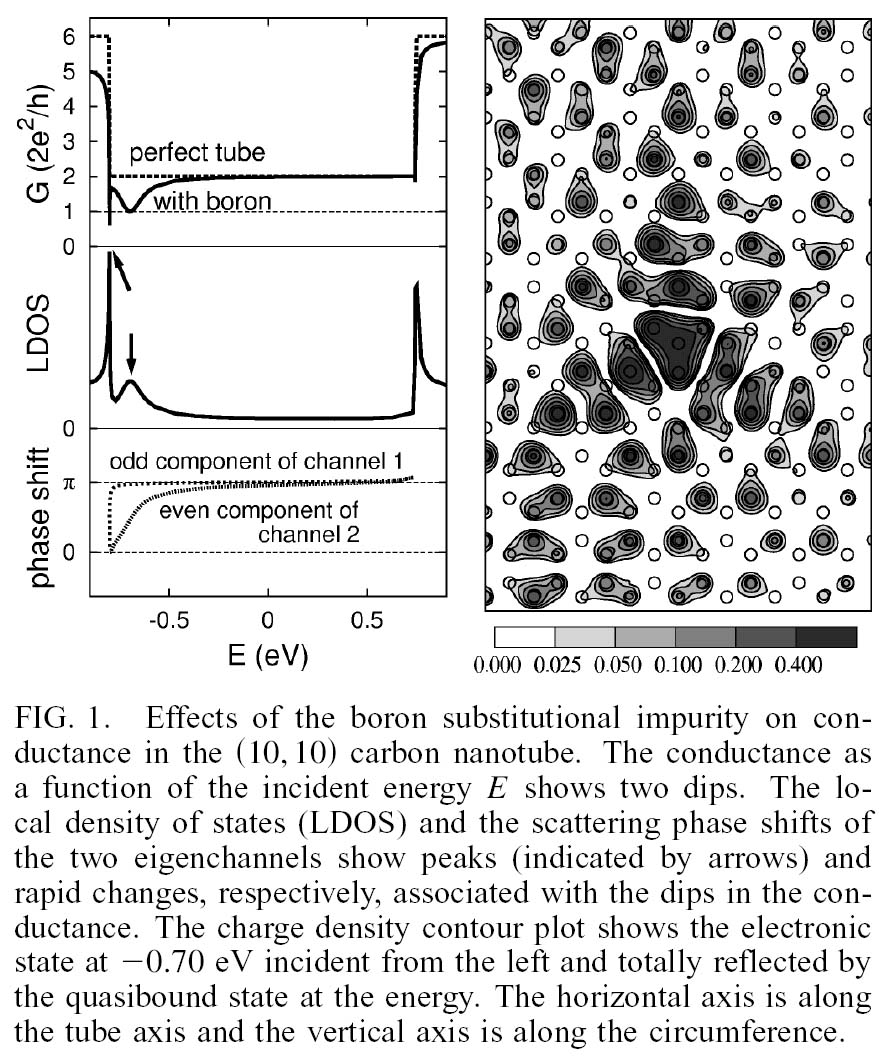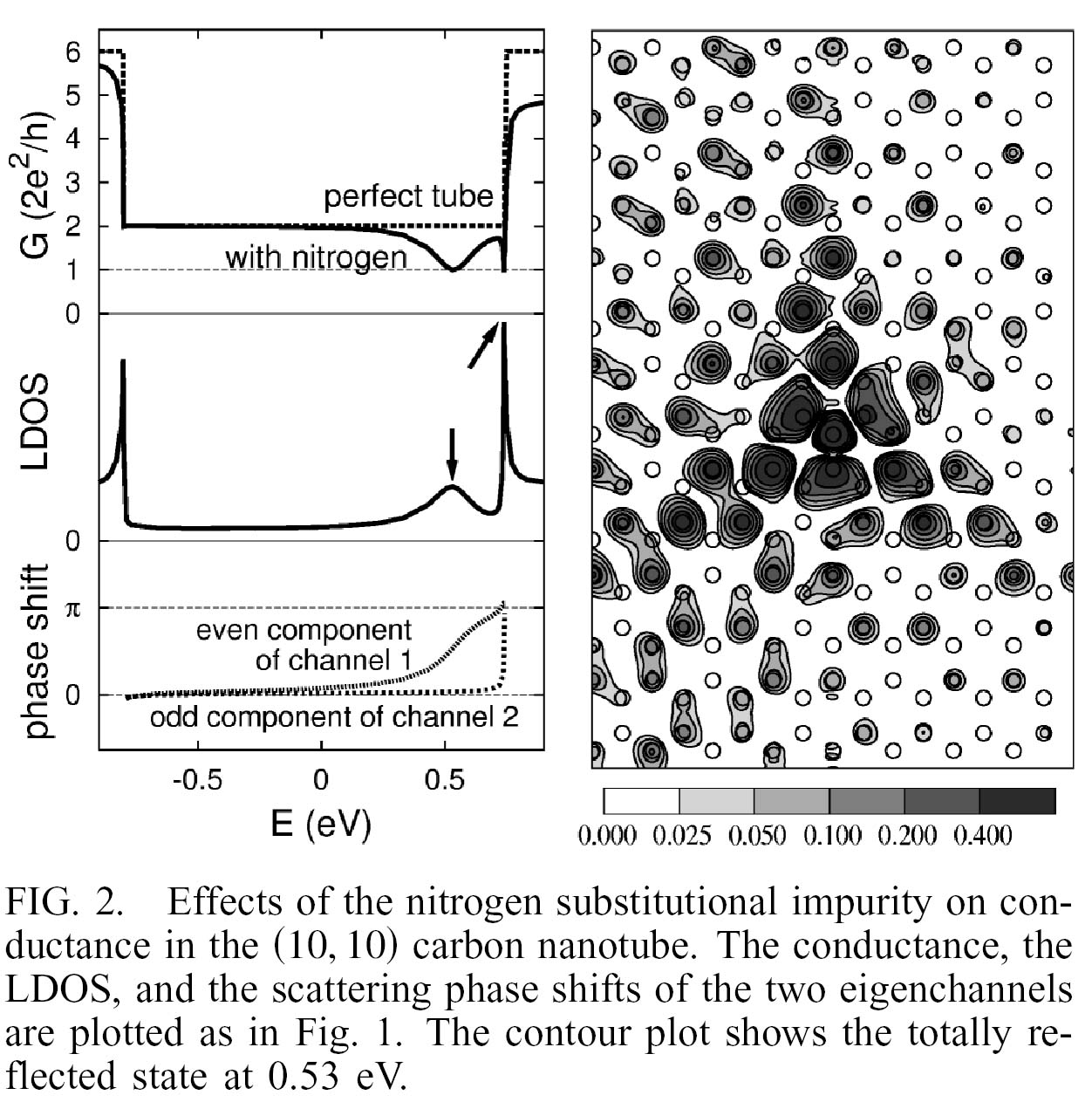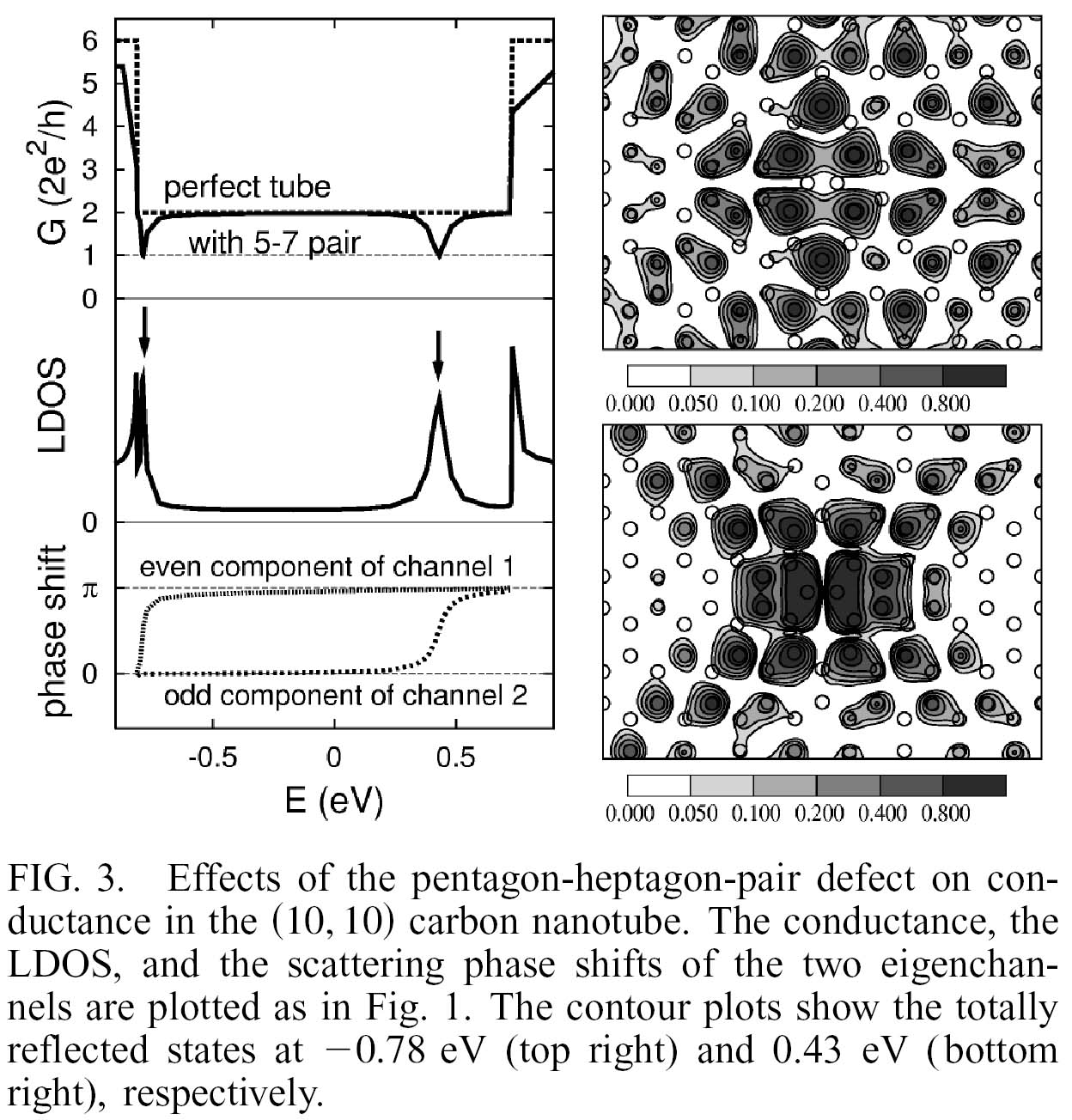 -electron tight-binding model.
-electron tight-binding model.
Hyoung Joon Choi(1), Steven G. Louie(2,3), Marvin L. Cohen(2,3), and Jisoon Ihm(1)
The effects of impurities and local structural defects on the conductance of metallic carbon nanotubes are calculated using an ab initio pseudopotential method within the Landauer formalism.[1] Substitutionally doped boron or nitrogen produces quasibound impurity states of a definite parity and reduces the conductance by a quantum unit (2e2/h) via resonant backscattering. These resonant states show strong similarity to acceptor or donor states in semiconductors. The Stone-Wales defect also produces quasibound states and exhibits quantized conductance reduction. In the case of a vacancy, the conductance shows a much more complex behavior than the prediction from the widely used  -electron tight-binding model.
-electron tight-binding model.
Reference


